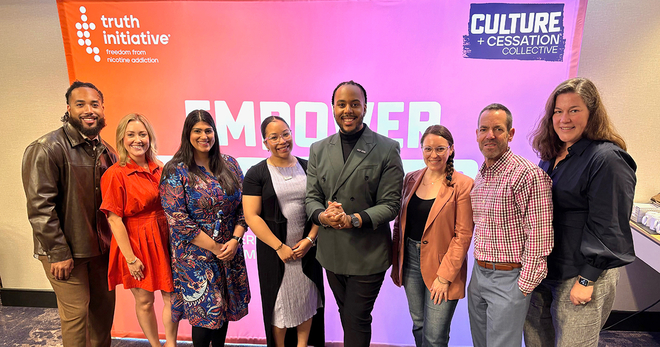How a group of Indiana youth is changing social norms around smoking
Ta'Aliyah Pinner can remember being 10 years old and asking her aunt what smoking was, after she saw a character smoking in a movie. Recently, after learning about the prevalence of smoking imagery in movies and other forms of onscreen entertainment, she realized the potential effects of that early exposure.
“Now, I get that that exposed me to smoking,” Pinner said. “If I’m that little and getting exposed to [smoking], I could end up getting bigger and wanting to do that, or try to go sneak off and do it because I’ve seen it.”
Research has shown that 37 percent of adolescents who start smoking do so because of smoking images they saw in movies. While major film studios have made some strides to reduce tobacco imagery in movies, tobacco depictions have persisted in youth-rated films. The Centers for Disease Control and Prevention found that, in 2017, theater audiences saw 4.6 billion tobacco incidents in youth-rated G, PG and PG-13 movies, a 59 percent increase from 2015.
Now, 16-year-old Pinner is raising awareness of the issue of smoking in movies and popular culture with her peers through the “Reinvent the Reel” grant program from Truth Initiative® and Trinity Health. Pinner, along with Myles Strong, Chase Iseghohi, Rylan Harvey and Edward Rogers, who range in age from 16-28, are all part of the Youth Media Institute at Indiana Black Expo, Inc. in Indianapolis, Indiana, one of the 10 youth-serving groups that received a Reinvent the Reel grant of up to $2,500 to educate and engage young people around the issue of tobacco use in movies, at local events and on social media.
“A lot of what’s going on has to do with education. Not all youth are educated on smoking,” Strong said. “Educating them is why this is so important. Education has to happen for this to work.”
The Indiana Black Expo, Inc. Youth Media Institute focuses on media production. Using the Reinvent the Reel grant, the group created a video about why smoking in movies is a concern for the health of youth, called “Change How We Are Exposed.” They have shown the video at speaking engagements, and partnered with the Boys & Girls Club to hold “Change How We Are Exposed” events featuring educational presentations and games, and a screening of a tobacco-free film.
“We want to change the social norm about [smoking],” Rogers said. “With our PSA, we’re able to empower, motivate and educate youth. The same way that we’ve been informed and educated, we’re trying to do that to our peers and the community.”
Reinvent the Reel grantees will also advocate for entertainment media companies to implement an R rating for movies with smoking, a move that would lead to an 18 percent decline in teen smoking and prevent up to a million deaths among children and teens alive today, according to the CDC.
The Reinvent the Reel program follows a challenge from 17 public health groups, including Truth Initiative, to entertainment studios to apply an R rating to movies with smoking. Only films that portray real people who used tobacco, such as in documentaries or biographical dramas, or that depict the negative health effects of tobacco use, should be exempt.
On June 4, seven U.S. senators sent a letter to the Motion Picture Association of America urging the association to “ensure responsible and consistent practices and reduce tobacco depictions” in youth-rated movies. On June 22, the MPAA responded to the senators' letter with its own, stating that while its rating system “strongly weighs the presence of any tobacco-related imagery, it is not designed to impose societal change or censor filmmakers.”
“If you’re going to have tobacco imagery, also support our cause as well,” Rogers said. “All we’re asking is to apply an R rating to the movie, if that’s what you feel you need to have depicted in your film. It’s just as simple as that.”
More in tobacco prevention efforts
Want support quitting? Join EX Program
By clicking JOIN, you agree to the Terms, Text Message Terms and Privacy Policy.
Msg&Data rates may apply; msgs are automated.


